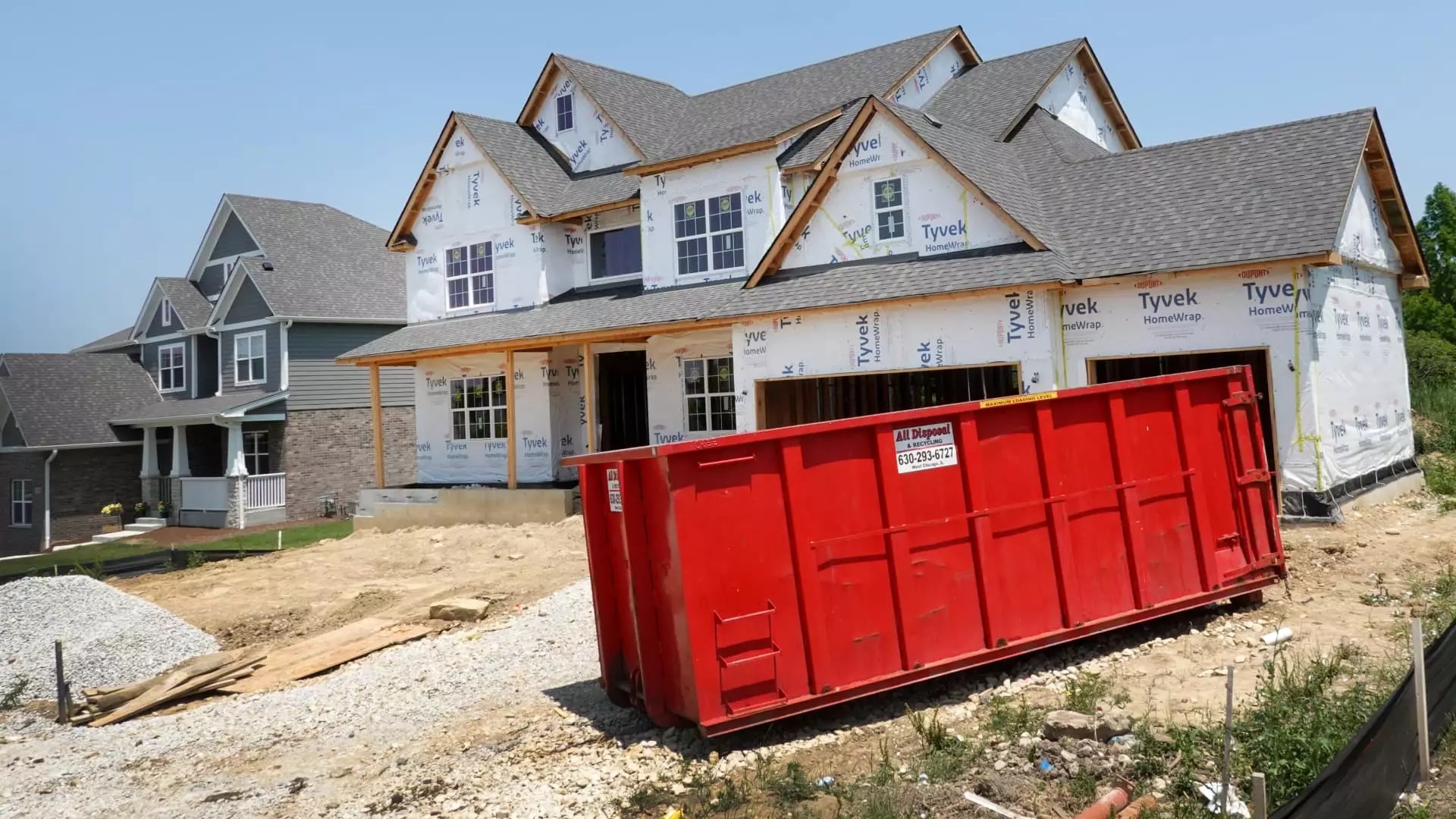The recent policy moves by President Donald Trump regarding tariffs are twofold: they were designed to protect American manufacturing while also, inadvertently, plunging the housing market into chaos. Homebuilders and consumers should brace themselves, as these tariffs could impose an additional cost of up to $10,000 on the average new home. This figure, highlighted by the National Association of Home Builders (NAHB), has profound implications that transcend mere statistical analysis. The reality is simple: an increase in housing costs inevitably impacts the dream of homeownership for many families across the United States.
While the stated reasoning behind imposing tariffs often revolves around protecting domestic jobs, there’s no escaping the fact that the main body that impacts the average consumer—the builders—is finding ways to cope with heightened costs. Tariffs, under the guise of protectionism, will eventually manifest themselves in higher prices tagged on housing, which is unforgivable in an already strained economic landscape.
The Priced-Out Effect and Its Realities
The NAHB’s early estimates put the burden of tariffs squarely on American builders and buyers. As the logistics of building homes rely significantly on materials sourced from partners such as Canada, Mexico, and China, imports like softwood lumber or gypsum are not just components—they translate directly to savings or added expenses for buyers. These tariffs act as a financial strain that restricts affordability and thus draws a more profound and nationalistic line.
Homebuilders, already grappling with the challenges of rising lumber prices and labor shortages, can do little but brace for impact. The notion that levies could lead to inflationary pressures—up to 14% in building costs according to recent assessments—sends shockwaves through the housing landscape. The homes that are essential for economic stability and personal investment are now at the mercy of a global trade war, leaving many households priced out and contemplative about whether home ownership is a realistic goal anymore.
The Investor Response: Panic and Decline
Investors, upon hearing of the proposed tariffs, reacted pessimistically. The SPDR S&P Homebuilders ETF has seen dramatic declines, falling more than 22% from its previous highs. The message is clear: uncertainty breeds caution. Industry leaders like D.R. Horton are painfully aware of how their revenue lines are jeopardized by these tariffs and have begun strategizing to mitigate costs. One fundamental aspect here is the struggle concerning Chinese imports. As manufacturers and builders adopt a strategy of reshoring their supply chains to combat both tariffs and increases in freight costs, the question arises—will this cost-cutting approach compromise quality?
For companies like K.B. Home, which predominantly source materials domestically, the impact could also be felt indirectly. The increased demand for American-made products may drive prices higher, squeezing margins even tighter for builders who rely less on imports. These escalating costs present a dire situation where builders must weigh their options: cut corners or sacrifice profits—neither scenario is ideal in sustaining healthy business practices.
Market Realities and Workforce Implications
Amid substantial disruptions, the recessioninduced concerns of the workforce come into play. With Trump’s immigration plans potentially reducing the labor pool, especially in border states, the construction industry faces another layer of adversity. A labor shortage coupled with increased material costs creates a perfect storm for rising home prices, which in turn translates into a diminished quality of life for countless working-class families. The rhetorical questions tossed around in boardrooms should alarm many: Is it worth building more homes if they remain unattainable dreams for the majority?
Significant parts of the market are wagering on future favorable conditions from Trump’s de-regulatory policies, which is a double-edged sword in and of itself. While deregulation can foster an optimistic outlook, it is imperative to think critically about the long-term ramifications of ongoing tariffs that threaten to destabilize one of the most essential markets in the U.S. The intricate web of immigration policies, trade tariffs, and labor availability does not merely allow markets to function seamlessly; they are tightly interlinked, and mismanagement can cause a catastrophic cascade of failures.
Pro-Consumer Measures are Necessary
Ultimately, as tariffs continue to shape the American economic landscape, it is evident that pro-consumer measures must become a priority. Homeownership should not be the exclusive domain of the wealthy nor should it be subject to erratic policy changes that diminish its accessibility.
There remains a pressing need for dialogue and a far-reaching approach to ensure that the dream of homeownership remains alive for millions. The detrimental impact of tariffs announced by the Trump administration indicates that without significant reforms, the American homebuying experience will continue to dwindle as families grapple with increasing financial pressures. In the battle between nationalism and consumer welfare, it’s imperative that consumer interests take precedence.


Leave a Reply